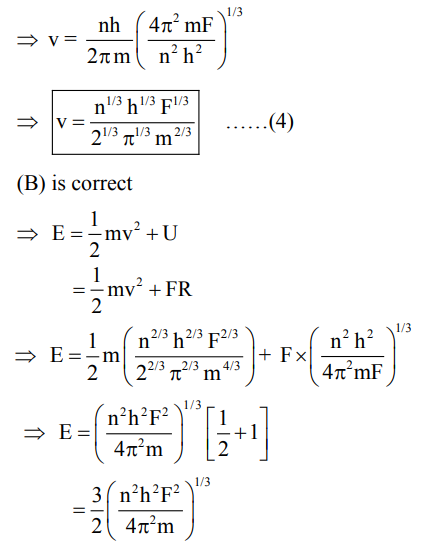Correct answer is (B,C)
U = Fr
[Using U = Potential energy and v = velocity, to avoid confusion between their symbols]
⇒ Force =\(\frac{-dU}{dt}\)= – F
⇒ Magnitude of force = Constant = F
⇒ F = \(\frac{mv^2}{R}\) ……(1)
⇒ mvR = \(\frac{nh}{2π}\) ……(2)

